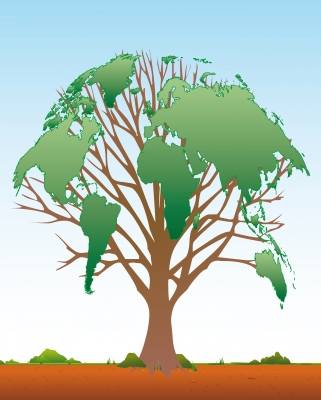
Many ISO International Standards support the objectives of World Environment Day, held every year on 5 June by the United Nations Environment Programme (UNEP), which itself participates in developing ISO standards, notably the ISO 14000 family for environmental management.
WED celebration began in 1972 and has grown to become the one of the main vehicles thr ough which the UN stimulates worldwide awareness of the environment and encourages political attention and action. The theme of WED 2011 is "FORESTS: NATURE AT YOUR SERVICE".
The development by ISO of the ISO 14000 family was one of the concrete results following on from the United Nations Conference on Environment and Development, in Rio de Janeiro, in 1992, translating into action ISO's commitment to support the objective of sustainable development discussed at the first Earth Summit.
In essence, the ISO 14000 family provides a framework for organizations large and small, in manufacturing and services, in public and private sectors, in industrialized, developing and transition economies, to:
Minimize harmful effects on the environment caused by their activities
Meet regulatory requirements
Achieve continual improvement of their environmental performance
Improve business performance through more efficient use of resources.
At end of December 2009, 13 years after publication of the first edition of ISO 14001, which gives the requirements for environmental management systems, the standard was being implemented by users in 159 countries and economies. These include both public and private sector organizations, large and small, in manufacturing and services, in developed and developing economies.
In addition to ISO 14001, the ISO 14000 family includes 22 other standards addressing specific challenges such as life cycle analysis, environmental labelling and greenhouse gases.
The ISO 14064:2006 and ISO 14065:2007 standards provide an internationally agreed framework for measuring greenhouse gas (GHG) emissions and verifying claims made about them so that "a tonne of carbon is always a tonne of carbon". They support programmes to reduce GHG emissions and also emissions trading programmes. Beyond their welcome by the United Nations Framework Convention on Climate Change, they are now being implemented on a day-to-day basis by users as varied as a New Zealand printer, a Norwegian shipping company, an Indian construction company and the Spanish organization that is one of the world’s largest transport infrastructure providers (see online bonus articles).
The ISO 14000 family is the most visible part of ISO's work for the environment. In addition, however, ISO it offers a wide-ranging portfolio of standardized sampling, testing and analytical methods to deal with specific environmental challenges. It has developed more than 650 International Standards for the monitoring of such aspects as the quality of air, water, soil and nuclear radiation.
These standards are tools for providing business and government with scientifically valid data on the environmental effects of economic activity. They may also be used as the technical basis for environmental regulations. Other environment-related work by ISO includes standards for designing buildings, or retrofitting existing ones, for improved energy efficiency.
Article Courtesy of: http://manufacturing.net
Image Courtesy of: xedos4

